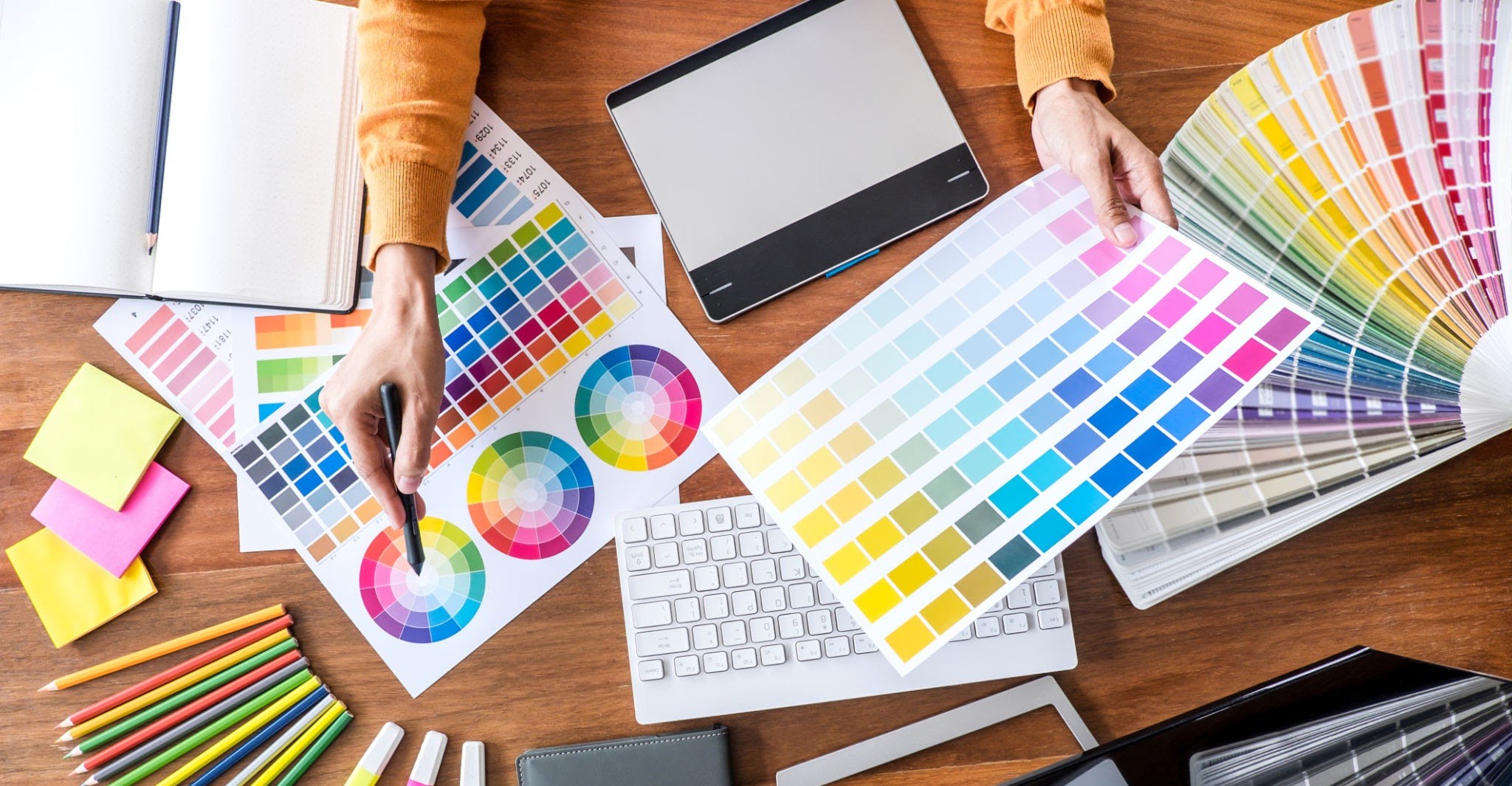The Complete Guide to Graphic Designing: Insights, Tips, and Resources for Creative Growth
Graphic designing is the art and practice of planning and creating visual content that communicates messages effectively. It combines creativity, technical skills, and visual storytelling to engage audiences through images, typography, colors, and layouts. Rooted in design history and visual communication theory, graphic designing has evolved with technology, moving from print-based posters and magazines to digital platforms, websites, apps, and social media.
The field exists to bridge the gap between information
The field exists to bridge the gap between information and audience understanding. Designers translate ideas, products, and messages into compelling visuals that resonate emotionally and cognitively. In today’s world, where attention spans are short, graphic design provides clarity and impact in communication.

Importance – Why Graphic Designing Matters Today
The importance of graphic designing has grown significantly in the digital era. Visuals are now central to how people interact with content, brands, and information. From educational infographics to digital advertising, design plays a critical role in shaping perceptions and guiding decisions.
Why it matters today:
-
Enhances communication by simplifying complex information.
-
Builds brand identity through consistent visual elements.
-
Supports digital marketing and content engagement.
-
Shapes user experiences in web design and mobile interfaces.
-
Encourages creativity and innovation across industries.
Who benefits from graphic designing:
-
Businesses aiming for stronger brand presence.
-
Educators and communicators simplifying information.
-
Content creators and influencers producing visually engaging media.
-
Audiences seeking clarity and aesthetics in everyday interactions.
Graphic designing solves the challenge of how to communicate effectively in a visually-driven digital environment.
Recent Updates – Trends and Developments (2024–2025)
The world of graphic design evolves quickly as tools, technologies, and visual preferences shift. Recent updates highlight how the industry is adapting.
-
Artificial intelligence in design – Tools powered by AI such as generative design platforms became more popular in 2024, helping automate layouts, color schemes, and even logos.
-
3D and immersive visuals – Growth in AR/VR technologies continues in 2025, making 3D graphics more common in advertising, gaming, and user interfaces.
-
Sustainable design practices – Eco-conscious graphics and digital-first approaches reduce material usage, aligning design with environmental awareness.
-
Minimalism with depth – A key trend for 2024–2025 is flat design combined with layered textures and gradients, balancing simplicity with richness.
-
Motion graphics growth – Short animated content for platforms like TikTok, Instagram, and YouTube Shorts is increasingly important.
| Year | Trend | Impact |
|---|---|---|
| 2023 | Rise of motion graphics | Increased video-based content engagement |
| 2024 | AI design tools expansion | Faster workflows and new creative possibilities |
| 2024 | Eco-conscious design | More sustainable approaches in digital spaces |
| 2025 | AR/VR integration | Immersive user experiences and marketing visuals |
Laws or Policies Affecting Graphic Designing
Graphic designing is influenced by intellectual property laws, copyright policies, and digital media regulations worldwide. Designers must understand these frameworks to create responsibly.
Copyright and intellectual property
-
Protects the originality of visual works including logos, posters, and digital art.
-
Ensures designers and organizations retain rights over their creative content.
Licensing rules
-
Stock images, fonts, and icons often come with specific usage rights.
-
Designers must comply with licensing agreements to avoid legal issues.
Data protection regulations
-
With user data integrated into personalized design, compliance with policies like GDPR in Europe is essential.
Accessibility standards
-
Many countries encourage or mandate compliance with digital accessibility guidelines, ensuring inclusivity in design for people with disabilities.
Tools and Resources for Graphic Designing
Graphic design thrives on a blend of creativity and technology. Tools and resources are crucial for productivity, skill-building, and staying updated with industry standards.
Design software
-
Adobe Photoshop – for image editing and retouching.
-
Adobe Illustrator – for vector graphics and illustrations.
-
Figma – popular for UI/UX design and collaboration.
-
Canva – user-friendly tool for quick layouts and social media graphics.
Learning platforms
-
Coursera, Udemy, and Skillshare – structured learning for design basics and advanced techniques.
-
YouTube tutorials – free resources for specific software skills and trends.
Inspiration and community
-
Behance and Dribbble – showcase platforms for creative portfolios.
-
Pinterest – inspiration for design concepts and mood boards.
Productivity tools
-
Trello and Notion – project management support for design workflows.
-
Google Fonts – free resource for typography.
| Category | Examples |
| Professional Software | Photoshop, Illustrator, Figma |
| Accessible Tools | Canva, Crello |
| Learning Resources | Coursera, Skillshare, YouTube |
| Inspiration Platforms | Behance, Dribbble, Pinterest |
| Productivity Tools | Notion, Trello, Google Fonts |
FAQs About Graphic Designing
Is graphic designing only about creating visuals?
No. It includes strategy, communication, and problem-solving, ensuring visuals convey the right message effectively.
Do I need advanced technical skills to start graphic designing?
Not necessarily. Beginners can start with user-friendly tools like Canva while gradually learning advanced software like Adobe Illustrator.
What are the most in-demand graphic design skills today?
Skills in UI/UX design, motion graphics, branding, and AI-assisted design are highly relevant in 2025.
How do trends in graphic design change?
Trends are shaped by cultural shifts, technology, and audience preferences. Designers often adapt annually to stay relevant.
Can graphic designing be applied beyond digital media?
Yes. While digital media is dominant, graphic design is also vital for packaging, print materials, signage, and environmental graphics.
Conclusion
Graphic designing is more than aesthetics; it is a powerful form of communication. It adapts to new technologies, cultural shifts, and creative needs, making it a dynamic and future-focused field. As tools like AI, AR/VR, and motion graphics continue to shape trends, designers who embrace both creativity and adaptability will remain at the forefront. With strong skills, reliable resources, and awareness of laws and accessibility, graphic design stands as an essential discipline in shaping how the world sees and understands information.